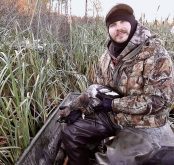Spring ended before it even had a chance to begin for one young male black bear this year. Like so many other bears in the area he found himself in the wrong place at the wrong time and had to be destroyed – not a pleasant way to begin the first week of May for the Resource Conservation team at Riding Mountain National Park (RMNP).
The 200-lb. male bear had been hanging around the Wasagaming and Onanole area for about one week prior to being put down. Although not aggressive, nor the cause of any property damage, the bear displayed an indifferent behaviour towards people and had obviously associated human habitation with food (birdseed, garbage, etc.).
Read Also

Boosting productivity could mean historic farm revenues
FCC report finds increasing productivity in the Canadian agriculture sector could mean $30 billion in farm revenue in the next decade
In the majority of cases relocation is strongly preferred to destroying an animal however it isn’t necessarily the answer.
“Even relocation is not always a good situation because it just moves one bear into another bear’s territory. It doesn’t solve the problem, it just moves it,” says Mel Hindle, resource conservation officer for RMNP. Generally the bears live by a “three strikes you’re out” rule, and if relocation is not successful after a third attempt the animal is destroyed, and in certain situations, like the one this May, the bear’s chances are reduced to one or two chances.
Due to increased human-bear contact over the years, RMNP has developed an extensive Bear Management Plan that outlines several detailed objectives. The primary focuses of the plan include visitor-staff safety through management techniques to minimize human-bear conflict, preserving the black bear population, and restore natural processes.
In order to achieve these objectives, Parks Canada and Manitoba Natural Resource Officers often work closely together on bear and wildlife conflict issues.
In many situations the bears are trapped and relocated, but in this particular instance the bear was deemed an unsuitable candidate for relocation. Many factors are taken into consideration in determining whether or not a bear is suitable for relocation.
Age, gender, bear behaviour, level of aggression, and type of conflict all play important roles in determining the bear’s fate. Being a young male displaying indifferent behaviour towards people made the chance of successfully relocating this bear very poor.
Generally bears prefer to avoid people whenever they can, however due to the area’s large black bear population (estimated at 900), encounters between people and bears are inevitable. It’s important to know, of the millions of encounters between people and bears each year only a tiny amount result in injury and even less result in a fatality. In North America approximately three fatalities a year result from black bear attacks.
By comparison, for every one human fatality resulting from a black bear attack there are approximately 17 fatalities resulting from spider bites, 180 due to bees and wasps, and 374 from lightning strikes.
Bears are indeed wild, unpredictable animals, deserving of our respect, but statistics like these do highlight the fact the majority of human-bear encounters occur wi thout incident.
It’s important to remember there are things you can do to make sure that the incident in May remains an anomaly. Please ensure all wildlife attractants are put away so bears aren’t habituated to areas where conflicts may occur.
This means always properly store all of your garbage and recyclables, ensure BBQ grills are cleaned and then covered after each use, remove your bird feeders from April to October, and whenever possible your pets should be fed indoors. Small steps like these can go a long way to ensuring the safety of you and your property and the survival of the bears.
Resource management officers appreciate your cooperation in reporting any bear encounters you experience. Please remember if you do encounter a bear note the behaviour of the bear.
What were you doing when the encounter happened? Where did the encounter occur? Most importantly leave your name and number so the resource management team can contact you if they have further questions.
The goal is to maintain a strong bear population that can co-exist in harmony with an ever expanding human population. In order for this to succeed the more intelligent of the two species needs to take the lead…. that would be us.
To report a problem bear outside the park please call Manitoba Conservation at their Neepawa office for areas east of Highway #10, and their Shoal Lake office for areas west of Highway #10.














